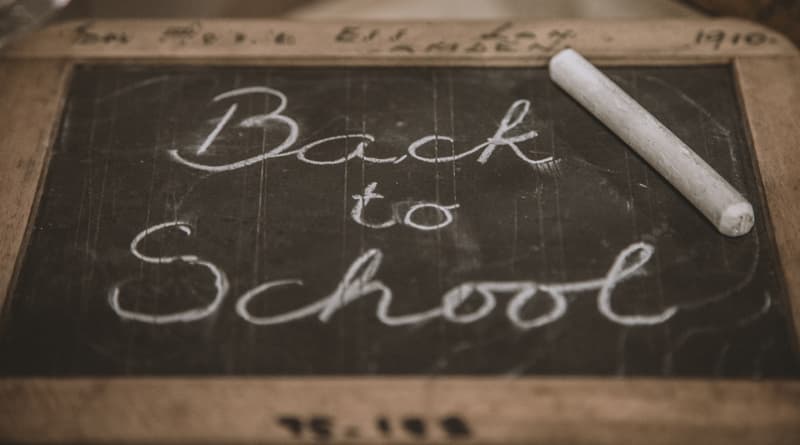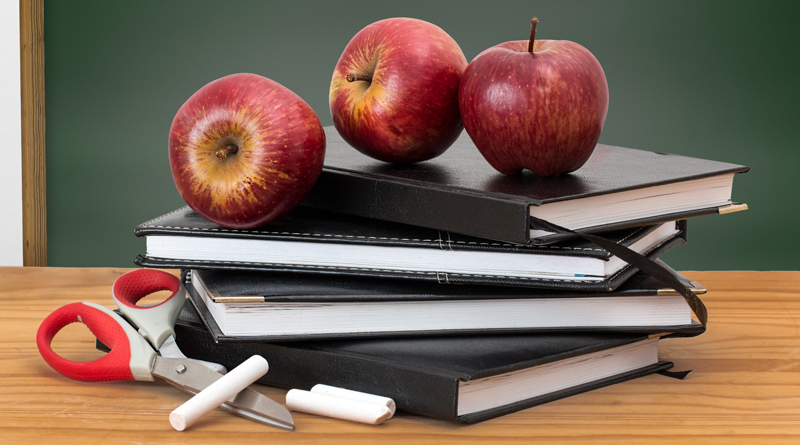
Back to School: How Mainstream Education has Changed in the Past 40 Years
By Hilda Pacheco
Education Through the Years
Teaching today is very different from what it was forty years ago when I first began. No, I am not talking just because of technology , which I have to admit can be very daunting for some of us. It’s much more than that. Things have changed in a fundamental way, in a human way.
Ask any veteran teacher, forty years ago you had your typical Bell Curve classroom. You knew you had to provide some extra challenging material to students on the front end of the curve, provide remediation to those on the bottom of the curve, maybe extra time before or after school, written reviews of lessons, notes from other students etc. and then you pretty much taught to the middle. Not necessarily easy but doable. If a child was too low, way below the bottom of the curve, most of the time the recommendation was a transfer to a special program; if a child was too high then maybe skipping a grade was the answer.
That was then, this is now… What has changed? Life has changed, society has changed, knowledge of how our brains work has changed. With all the new research and information we now have, education and the way we teach our children needs to be viewed differently. We can not rely anymore on the “one size fits all” concept. Not with what we know.
What do we know now?
Anyone who has spent some time lately in any regular classroom has probably observed that the times when students all came in with more similarities than differences are long gone. With each passing year teachers are faced with a higher number of students with “different brains”.
According to the statistics of the National Center for Education Statistics: “A majority of special education students—64.8 percent of those ages 6-21—spend 80 percent or more of their time in regular education classes, according to 2019 data. That number has more than doubled in recent decades. In 1989, only 31.7 percent of students spent 80 percent or more of their time in regular classes.” From the general U.S. population around 5 to 9% has some sort of neurodiversity and may or may have not been diagnosed with a learning disability. Of these, dyslexia continues to be the most common one, affecting over 15% of children. Followed by ADHD which encompasses 9.4% of all children in the United States.
It’s The Law
Some may argue that children with special needs may benefit from a separate smaller and more individualized classroom setting while others will affirm that special needs students thrive when forming part of a regular mainstream setting in school. Nonetheless teachers and school administrators need to be aware and follow the mandates of the American Disability Act, specifically the Individuals with Disabilities Education Act which states clearly that schools must offer education to children with disabilities and mandates that, to the “maximum extent appropriate,” they be educated with their non-disabled peers in the “least restrictive environment.” (1 ) Parents need to know the rights that their children are entitled to under the law.
To Be or Not to Be
I mentioned earlier that 40 years ago it was not unusual to have neurodiverse students sent to a special ed classroom but that is certainly not the case nowadays. With new research and abundant information on neurodiversity as well as with the introduction of legislation, more and more students now participate in the regular mainstream classroom than before.
There are many advantages to inclusion in the regular classroom. Neurodiversity in a classroom brings richness to it. It makes everything more interesting and dynamic. Students with “different brains” bring many strengths to a classroom such as high spatial ability for students with dyslexia, high creativity and ability to think out of the box in students with ADHD and excellent computer and technological skills among students in the autism spectrum.
A great benefit of being part of a regular mainstream classroom for students with neurodiversity is the fact that research has shown that the learning environment has a great effect on neuroplasticity. A learning environment which gives the opportunity for focused attention, for experimenting with new things and which provides challenge will stimulate positive changes in the brain. This has been proven to be very important during the early years of learning. A rich environment will result in great rewards well into the adult years.
Perhaps the greatest benefit for all students in a classroom, the neurotypical and the neurodiverse, is the emotional and human aspect that results naturally from being exposed on a daily basis to diversity in a classroom. Students learn from early in life that we are all different, that we all have areas of strengths and that we all need to pitch in to help each other in life. Acceptance, tolerance and compassion teachable moments occur more often in a neurodiverse classroom.
Now that we know, what do we do?
We now know that there is great diversity not just in learning styles but in the ways we all receive, perceive and process information. We now know that a teacher may have 35 children sitting in front of her/him in a classroom and will not have a Bell Curve graph but more like a roller coaster line graph going up and down and left and right and in all directions. We now know that there will be children there with a great range of neurodiversity with intellectual and emotional conditions that will range from A to Z and names of diagnosis that many people may have never heard of. So as a regular mainstream classroom teacher, what to do? How does a responsible teacher reach all those “different brains” ? What tools must be given to educators so they can teach effectively all of the students? As a parent how does one make sure their child’s needs are addressed?
During the next few weeks we will discuss the most commonly found neurodiversities and mental health issues such as ADHD, ADD, OCD, Anxiety Disorder, Depression, Dyslexia, Short Term Memory deficiencies and other learning disabilities which may be the cause of lack of achievement in the classroom. We will give what we hope will be important information as well as ideas and tips to parents and educators. Helping them so they may work together to ensure the success of these young students. As an educator it has been my experience that the better informed everyone surrounding a child is, the greater the positive strides the child will make. Like they say: It takes a village; and if that village is made up of people with knowledge, love and compassion then the possibilities are endless.
Reference: (1) https://www.edweek.org/teaching-learning/special-education-definition-statistics-and-trends/2019/12





